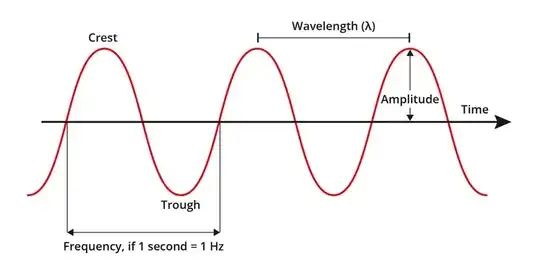Imagine that you have a great big loudspeaker on top of a mountain, with a switch that makes the loudspeaker cone jump into one of two positions. When you flick the switch down, the cone jumps forwards and sends out a positive pulse, and when you flick it up, the cone jumps back again and sends out a negative pulse. The speed at which your standard pulses move through the air depends on things like air temperature and density.
Sound travels at about 300 metres per second. Two pulses makes a wavecycle. If you change the switch position once every ten minutes, you have a squarewave signal with a 1/300hz frequency. If you flick it once a second you have a signal with a 1/2 Hz frequency. There's no obvious reason why the individual pulses would move at a different speed just because there's another pulse behind them or ahead of them maybe a kilometre away. The pulse speed doesn't care whether you flick the switch once a minute, once a month, or once a year.
So there's a range in which the signal speed is independent of the frequency.
Frequency only really starts to become an issue if the frequency is high enough and the wavelength small enough to interfere with some scale of structure in the medium, or if the waves are close enough to each other to start interacting, or if the energy transmitted is great enough to start altering the properties of the medium (like, your soundwaves start heating up the air).
For light in a vacuum, you're only supposed to start getting frequency-dependencies if the frequencies are so absurdly high (like, ultra-ultra-hard gamma rays) that the energies start distorting spacetime and/or creating particles so that you no longer have a vacuum. But even if that starts happening, it's going to tend to affect all frequencies.
